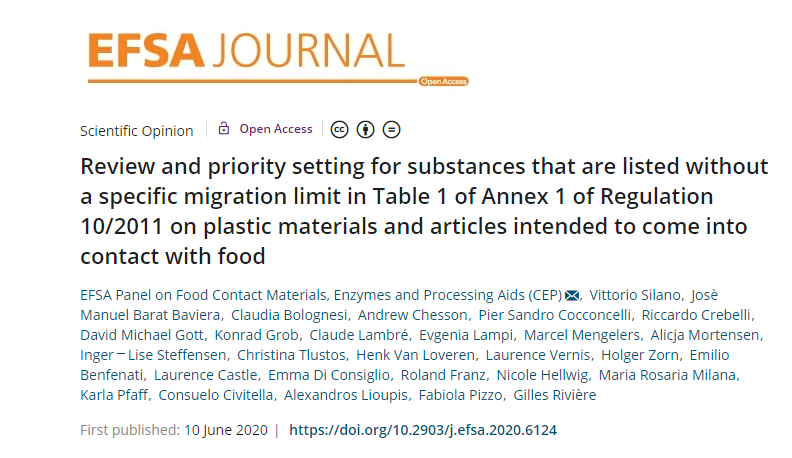(Click on the picture to view the original text)
The EFSA Panel on Food Contact Materials, Enzymes and Processing Aids (CEP) was requested by the European Commission to review the substances for which a Specific Migration Limit (SML) is not assigned in Regulation (EU) No 10/2011. These substances had been covered by the Generic SML of 60 mg/kg food, but with Regulation (EU) 2016/1416 it was removed, necessitating their re‐examination. EFSA was requested to identify those substances requiring an SML to ensure the authorisation is sufficiently protective to health, grouping them in high, medium and low priority to serve as the basis for future re‐evaluations of individual substances.
The CEP Panel established a stepwise procedure. This took into account existing hazard assessments for each substance on carcinogenicity/mutagenicity/reprotoxicity (CMR), bioaccumulation and endocrine disruptor (ED) properties along with the use of in silico generated predictions on genotoxicity. Molecular weights and boiling points were considered with regard to their effect on potential consumer exposure. This prioritisation procedure was applied to a total of 451 substances, from which 78 substances were eliminated at the outset, as they had previously been evaluated by EFSA as food contact substances. For 89 substances, the Panel concluded that a migration limit should not be needed. These are in the lists 0 and 1 of the Scientific Committee for Food (SCF), defined as substances for which an Acceptable Daily Intake (ADI) does not need to be established, along with substances that are controlled by existing restrictions and/or generic limits. Of the remaining 284 substances, 179 were placed into the low priority group, 102 were placed into the medium priority group and 3 were placed into the high priority group, i.e. salicylic acid (FCM No 121), styrene (FCM No 193) and lauric acid, vinyl ester (FCM No 436).
Reference:

